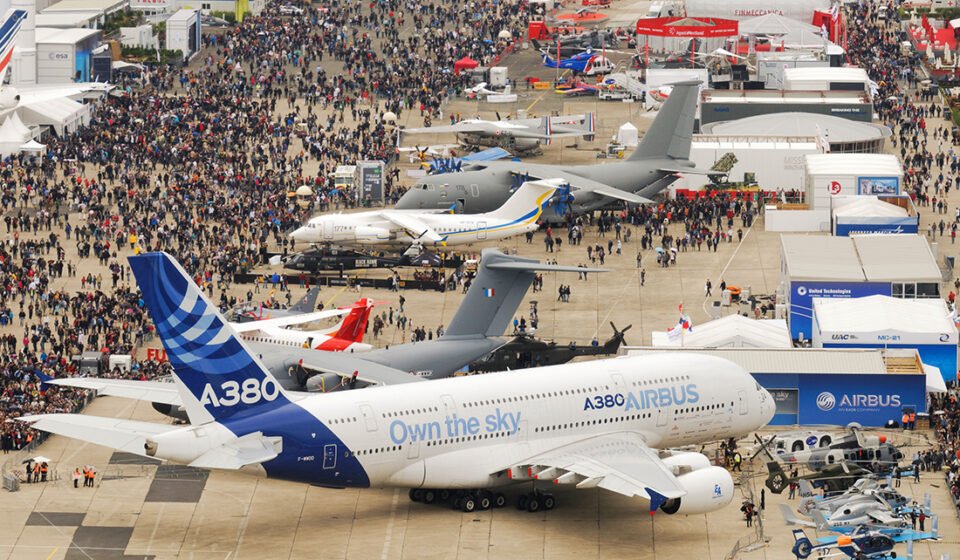Two new models of already-existing aircraft families are being brought by Boeing, and both businesses are eager to showcase their respective electric-hybrid aircraft technologies. At the Paris Airshow, Boeing is showing its 777-9 and 737 MAX 10, highlighting their capacity and fuel efficiency.
With a 15-minute charge time and planned type certification by the end of the decade, Wisk Aero, an eVTOL manufacturer owned by Boeing, is showcasing its self-flying air taxi.
The Ecopulse hydrogen-electric hybrid will make its debut, while Airbus will fly the A321XLR on its first public flight.
Mega airplane manufacturers Airbus and Boeing are among the most eagerly awaited exhibitors as industry insiders travel to Paris this week for the international airshow. With reports that an order for up to 500 aircraft is imminent, both manufacturers often receive sizeable orders throughout the event.
Boeing left the Farnborough event last year, which takes place on even years, with 192 new definite orders. While only 37 new aircraft were ordered from Airbus.
Boeing places huge bets
This week at Le Bourget, the US manufacturer will display its Boeing 737 MAX 10 and 777-9 for the first time. The 777-9, the largest and most effective twin-engine jet in the world, is built on the 777 family of existing aircraft and combines the cutting-edge technologies employed in the creation of the 787 Dreamliner. The widebody is on target to enter service in 2025 and is expected to consume 10% less fuel, emit 10% fewer pollutants, and cost 10% less to operate than the competition.
Boeing will contribute its Boeing 737-10 in the narrowbody category. The aircraft is the 737 MAX family’s longest member and has more than 3,500 net orders altogether. The aircraft, according to Boeing, will give operators more space, better fuel economy, and the greatest per-seat economics of any single-aisle aircraft now on the market. The event’s enthusiasm was conveyed by Dr. Brendan Nelson, president of Boeing Global:
“As our industry returns to Le Bourget, we look forward to joining our customers, suppliers and partners at a time when commercial air travel demand is surging and defense platforms are more essential to global security. We will continue to work together globally to support aviation’s objective to net zero emissions by 2050 as sustainable growth takes center stage over the next 100 years. Boeing will also have a stationary display at the exhibition. An interactive display showcasing the 777X’s bigger cabin, spacious and adaptable architecture, and modernized design will be shown in a dedicated area that will focus on the 777X’s passenger interior. Since the project’s launch, Boeing has secured more than 350 net orders for the 777X family of aircraft, which also includes the new 777-8 Freighter and passenger variants 777-8 and 777-9.
A Boeing 787-9 will also be displayed by Riyadh Air, the newest airline in Saudi Arabia, with its new indigo livery, which was designed to resemble an airplane window seat and was inspired by the colors of the night sky. The aircraft will be on static exhibit all week.
The electric vertical take-off and landing (eVTOL) aircraft producer Wisk Aero, now a fully owned subsidiary of Boeing, is also anticipated to make a splash. With a range of 90 miles, a cruising speed between 110 and 120 knots, and seating for four passengers and their luggage, its WISK Explore Generation 6 self-flying air taxi will only take 15 minutes to charge. By the end of the decade, it should be type certified and have a cruising altitude of between 2,500 and 4,000 feet.
Takes to the skies is Airbus.
Airbus debuted its A321XLR (eXtra extended range) at the most recent Paris Air Show. The long-range narrowbody received numerous orders after it became popular. The French manufacturer is returning to its native country this year and bringing its aircraft back into action for the first time in four years.
Before the exhibition, it was revealed that Airbus signed orders this month for 60 A320-family planes with a lessor and 10 A350s with a significant airline, the buyer of which would be revealed later. Additionally, it’s been reported that IndiGo and Airbus are in final negotiations for an order of up to 500 A320s, which, if signed, would be the greatest aircraft order in history in terms of the quantity of aircraft. Christian Scherer, the chief commercial officer of the aircraft manufacturer, is prepared for a hectic week:
Military and commercial aviation models are among the several aircraft that Airbus is bringing to the airshow. Its popular narrowbody A220 will be on exhibit, including an Air France showcase aircraft. After a two-year rivalry, Qatar Airways will present its Airbus A350-1000 and A319 during the event. The carrier will also deliver an A350-900 and four of its own aircraft, including the A330MRTT, A321LR, and A321XLR.
What is in the near future?
Additionally, there are persistent reports that Airbus may release an expanded version of the Airbus A220-500, the smallest aircraft in its family. The plane’s direct rival would be the Boeing 737 MAX 8, and it would also marginally overlap with the A320 family of the same manufacturer. Asserting that its present focus is to increase the production rates of the current A220-100 and A220-300 models, Airbus has explicitly refuted any discussions of the release of a new aircraft.
The Hydrogen-Electric Hybrid Ecopulse is also on exhibit for the first time. The Daher-Socata TBM 900 turboprop aircraft serves as the foundation for the EcoPulse. Six wing-mounted propellers are added to the display demonstration model, which still uses its regular engine and propeller systems. A Safran ENGINeUS 45 kW electric engine or a 100 kW auxiliary power unit is used to generate power. “Sometime later this year,” according to Airbus, the demonstrator is anticipated to fly with the electric system fully operational.
Each and every one of the present aircraft manufacturers anticipates a busy week. By 2042, the global aviation sector would require more than 40,000 new aircraft, with a face value of $8 trillion, according to a recent Boeing prediction. Guillaume Faury, CEO of Airbus, recently told Reuters that although supply chains have steadied, there were still critical manpower shortages throughout the sector.




